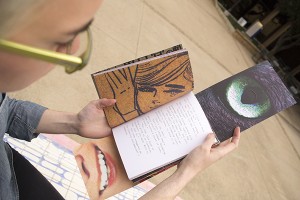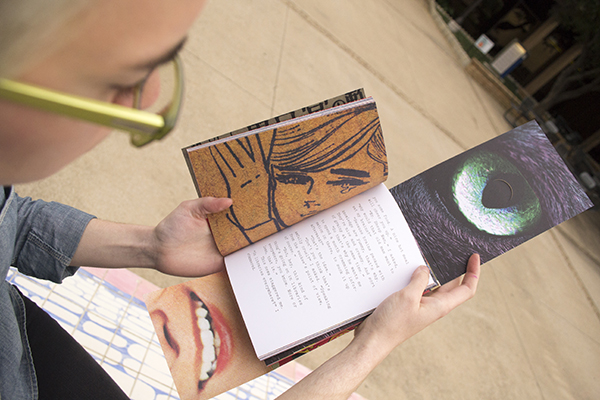
Photo by Katelyn Townsend/The Collegian
By Tabitha Redder/managing editor
Slim, eclectic but not entirely new, Japanese author Haruki Murakami’s 2008 novella The Strange Library was recently republished in a unique fashion that accurately reflects the curious tale inside.
The book concludes in just under a hundred pages, which is equivalent to a mere chapter inside his other monstrous works. The Strange Library is definitely something one can finish in a single sitting.
Before even delving into the novel’s frustrating complexities, the reader sees a peculiar cover — it has two horizontal flaps that open outward, one on the top and one on the bottom, that make reading quite an awkward experience.
Once readers maneuver through this oddity, they’re met with the first page of the book written in a massive Typewriter font.
This is not your average novel.
The entirety of The Strange Library is written in Typewriter, albeit a smaller size than the first page, and is also peppered with full-page graphics cryptically illustrating the plot.
The novel’s storyline follows an unfortunate bookworm as his excursion to the library turns very strange indeed.
After a librarian directs him to Room 107 in the building’s basement in his spontaneous quest for books about tax-keeping in the Ottoman Empire, he finds he is now a prisoner of the library.
Though he initially seems harmless, the librarian sheds his façade and says if the boy adequately memorizes three large books (all related to Ottoman tax-keeping) in a month’s time, he will be set free.
The boy soon discovers this is a lie and the librarian intends to feast on his brain that will surely be “creamy” with knowledge after furiously devouring information for a month straight in hopes of seeing daylight again.
Though he is a prisoner, Bookworm is given three meals a day by a timid man completely clad in sheepskin and is visited occasionally by a beautiful woman whose existence is ambiguous at best. With their aid and support, he clings to the idea of escaping Room 107.
The Strange Library has few characters, the protagonist nerd boy isn’t even named, but this isn’t to say they aren’t well-developed or distinctive.
The plot is colorful and grows more bizarre as the reader digests each chapter, each of which is no more than a handful of pages at most.
The ending, like other Murakami books, leaves the reader frustrated but not entirely unsatisfied. There are definitely unanswered questions but by now, his loyal fans know that is exactly what he intended.
For readers who enjoy the weird side of things or who want to read something short with no commitment, this book is perfect.

